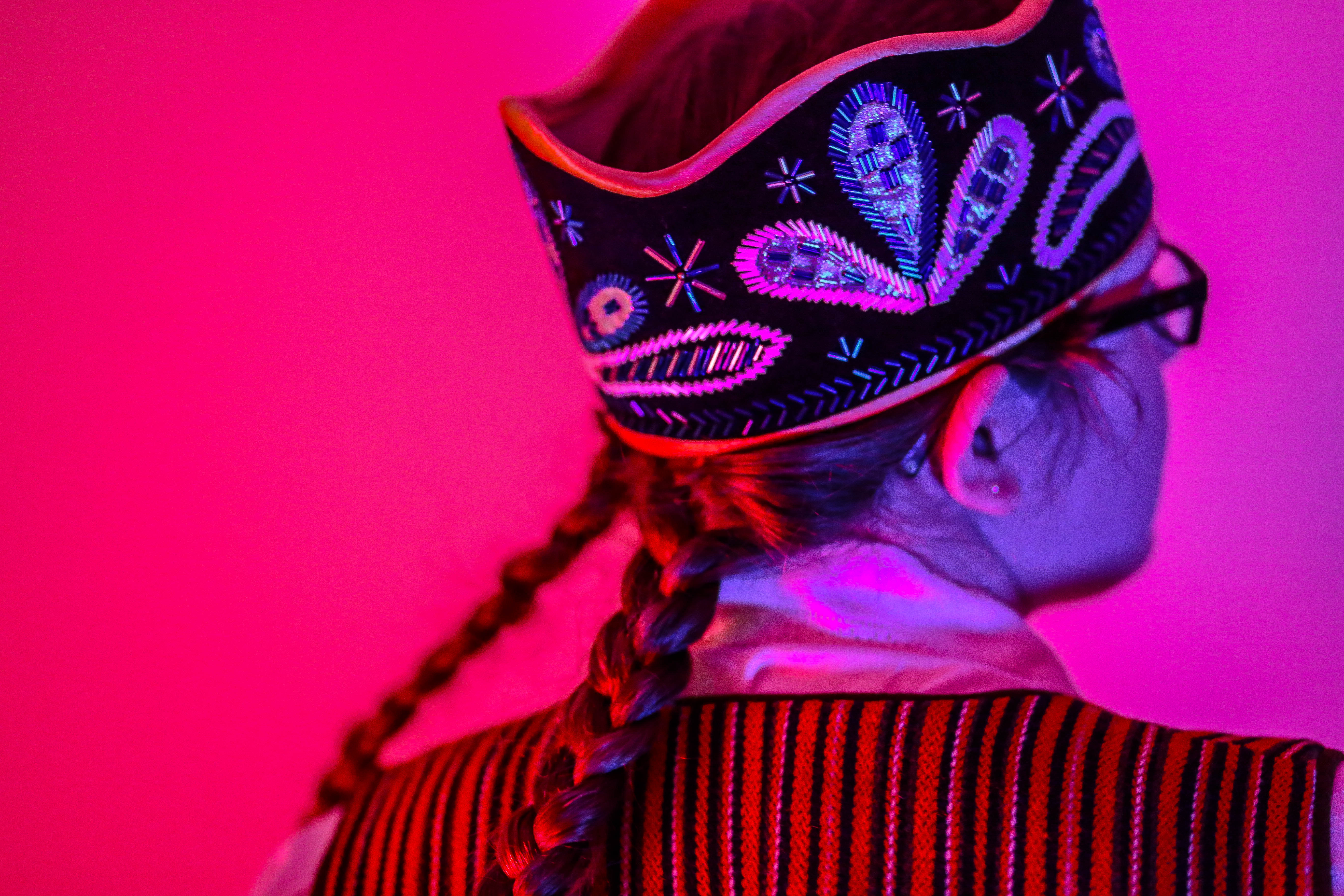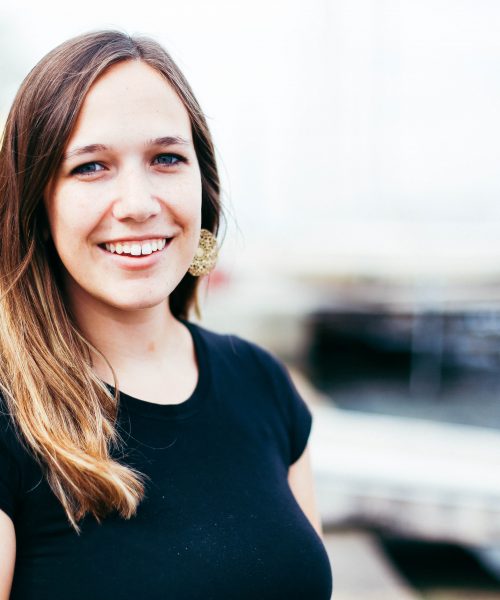Throughout the years, polka has been an integral part of Wisconsin’s culture, and it has changed with the times to keep Wisconsinites moving
Everyone quieted down as the first note of the accordion wheezed throughout the room, signaling the final portion of the night’s music was about to begin. The silence didn’t last long, within a few seconds people began clapping to the beat and others rushed up to the stage to polka.
This was just another Friday night at the Essen Haus.
The Essen Haus, located in Madison, isn’t the only place Wisconsinites can be found polka dancing. They can be found polkaing during the seventh inning at a Milwaukee Brewers game or the Fifth Quarter at a Badger football game. Some people go to polka festivals to dance or can be found polka dancing at Oktoberfest celebrations. Wisconsinites can be found polkaing all across the state.
Polka has been a part of the culture in Wisconsin since European immigrants brought it over in the late 19th and early 20th centuries. In 1993, polka even became Wisconsin’s official state dance. Families of the European immigrants have kept polka alive by sharing their cultural traditions with the community and continuously moving those traditions forward into the next generation. Over time, polka has evolved to fit the needs of that next generation to keep them moving their feet to the music.
Roll out the barrel
James P. Leary, professor emeritus of folklore and Scandinavian studies at UW–Madison and the co-founder of the Center for the Study of Upper Midwestern Cultures, calls polka “a dance of change.”
The polka emerged in Europe around the late 1820s and early 1830s, according to Leary. Couple dances were a “kind of radical phenomenon” at the folk level during a time when basic village dances were solo or performed as a group in a line or a circle, he says.

“The idea of holding onto a partner and moving around was really seen as sort of radical and kind of sexy,” Leary says.
This was a time of movement and urbanization. People of various ethnicities were moving from their villages in Europe to larger cities, and others began immigrating to America. The people were mobile, and so was the polka.
“When people came over, they were working side by side on farms or at a lumber camp, or what have you,” Leary says. “At first they might not have been able to necessarily speak each other’s language too well, but they all knew some version of the polka.”
We’ll have a barrel of fun
The evolution of polka intensified in the 1920s when advancements in technology allowed polka to be spread to new audiences. The emergence of media would expose people to other musical traditions from far away. Leary says this allowed musicians to begin creating polka fusions with jazz, blues and country music.
“Suddenly you had sound recording. You had telephones so you could set up gigs, you had automobile transportation, you had decent roads,” he says. “It was possible to get a gig at a local radio station, use the phone to book gigs within the listening range, travel and play within that area, make records that then you could sell or publish little songbooks.”
Taverns also contributed to the spread of polka across Wisconsin. Taverns were an old European “peasant pattern,” according to Leary, that acted as a club for communities to get together. Leary grew up in Rice Lake, Wisconsin, in the 1950s and says there were a lot of country taverns at the time.
“You would go there, especially on a fish fry night or a Sunday afternoon, and whole families would be there, and there would be a polka band,” he says. “You could dance with grandma or something like that. … You could go and get together and have a beer and some music and some food, and maybe dance and have a good time.”
Zing boom tararrel
The Friday night scene at the Essen Haus could have taken place at an old tavern 50 years ago. Nobody was dancing with grandma, but there was plenty of beer and food, and the patrons were definitely having a good time. Polka has stayed around all these years because it is always changing to remain relevant to the next generation.
 “If a cultural practice doesn’t change, it dies,” Leary says. “It becomes a fossil.”
“If a cultural practice doesn’t change, it dies,” Leary says. “It becomes a fossil.”
Steve Meisner has been playing polka music for more than 40 years. During that time, he’s seen how polka changes with new generations.
“Polka music had taken on new forms with the younger generation of performers. They’re not raised anymore with the dance era of dance bands like I was,” Meisner says. “So the new generation of people that are growing up with the music, and then being a part of it, they’re using their influences of growing up in a different atmosphere, a different background.”
These changes can be seen during Pulaski Polka Days in Pulaski, Wisconsin, near Green Bay. A lot of bands and dancers at the festival are younger and play at a high volume with a lot of dynamics. They tend to play at a slower two-fourths time, Leary says, that allows the older crowd to dance at a normal polka tempo while the younger crowd can double time it in a “really vigorous kind of athletic style of dancing.” Leary says growing up around this, especially in a place like Pulaski, can be exciting and allow for the next generation to be compelled by polka. But what does the next generation of polka look like?
Ring out a song of good cheer
Lauren Berns is a 19-year-old student studying biochemistry at UW–Eau Claire. She also plays the flute in the St. Croix Valley Polka Band, a band of high school and college students that’s active during the summer.
She got her start with polka in high school. Berns says she had older friends who started a polka band after coming across polka music they found the school wasn’t using anymore.
“They just got a couple of people together and started playing the music at just small little community events, which eventually just kind of transpired into something bigger,” Berns says.

The band, which originates from Hudson, Wisconsin, usually has around 15 members each summer. according to Berns. They travel to community events and nursing homes around the area to play polka music and spread cheer. Their motto is “to bring joy to the joyless and polka to the polka-less,” which Berns says usually gets a couple laughs from the audience.
“It’s not anything like being in a normal concert, big band or anything like that, where there’s stress — like you need to know your part 100 percent. I mean, if there’s things that go wrong, there’s things that go wrong,” Berns says. “We just try to have fun with it, especially during the piece. If the flute section isn’t playing, but there’s words in the song, we’ll learn the words, we’ll sing it, we’ll get up and go dance with people just to keep a really positive vibe going throughout the group that reflects out into the crowd.”
Berns says she’s never seen another group like theirs in the area that’s made up of only young members playing polka music.
“People are always commenting about how absolutely amazed they are that we are so young,” she says. “They usually see polka music as for older folks like them. But to see these 16-, 17-, 18-year-old kids that are playing polka music and enjoying it definitely leaves a real big impression on them.”
Members of the band usually come back every summer until around their sophomore or junior year of college, when they can no longer make the commitment. Berns says they pass the leadership roles to returning members of the band who have shown a lot of interest and commitment. They also recruit new members every summer by holding a rehearsal at Hudson High School to get students excited about polka and hopefully to want to join.
The goal for St. Croix Valley Polka Band is to keep growing, Berns says. Currently, almost every member has been from Hudson, but the band hopes to expand its recruiting to other schools. The members also want to expand their outreach efforts.
“To see the flood of memories and emotion and happiness that [polka] can bring — it’s such a cool experience,” she says.
The gang’s all here
Like the early European immigrants in Wisconsin, Wisconsinites of the next generations will continue to move the traditions of polka forward through their families.
Michelle Lazar, an 18-year-old student at UW–Madison studying molecular biology and psychology, grew up with polka being a part of her family’s traditions. Her parents immigrated from Czechoslovakia over 30 years ago from an area that is now part of Slovakia. They originally came to Washington, D.C., then moved to Maryland, and eventually ended up in Wisconsin.
She says her family has a “tendency to polka” at special events or to celebrate something that happened, but they mostly polka at weddings. Whenever one of her family members gets married, the reception includes a portion that’s just for polka.
“The bride changes into traditional Slovak costume and then polka music plays, and it’s a fun way for us to share our Slovak heritage with our American friends,” Lazar says. “Polka has been kept fun for the younger generations in our family because we specifically correlate it with events like this, like weddings or big celebrations, and it reminds us of our heritage even when we’re living here in the states.”
Lazar believes that her family will continue to pass down the tradition of polkaing at family celebrations because it has already been integrated for so long.
“Polka is a part of my family’s lifestyle for celebrating happy occasions and reminding us where we came from, which as immigrants is always a central part of our story,” she says, adding that it’s part of an even larger story.
It’s midnight at the Essen Haus and the music is still going. It’s loud and lively, and the only sounds that drown it out are the occasional bangs of fists against the tables, egging on someone to finish what’s left of their boot of German beer. The crowd is young, almost all appearing to be millennials.
How polka is shared now parallels that of the past: through the fusions of new sounds, the connections made through community and the traditions of families. These methods keep polka young and moving forward to the next generation of Wisconsinites.

Nali is a senior majoring in journalism with certificates in environmental studies and — if she can push herself through just one more semester — French.
She is from Hudson, Wisconsin, and like any true Wisconsinite, her favorite food is cheese. Nali is most passionate about being an aunt, a hockey goalie and a mother to her wiener dog, Deli.
Her dream job would include designing, traveling and saving the environment. So if you know of a job that fits that description, please let her know.

